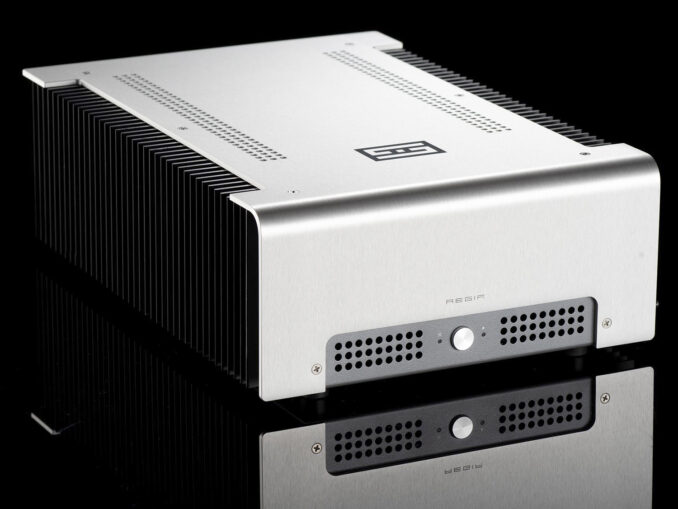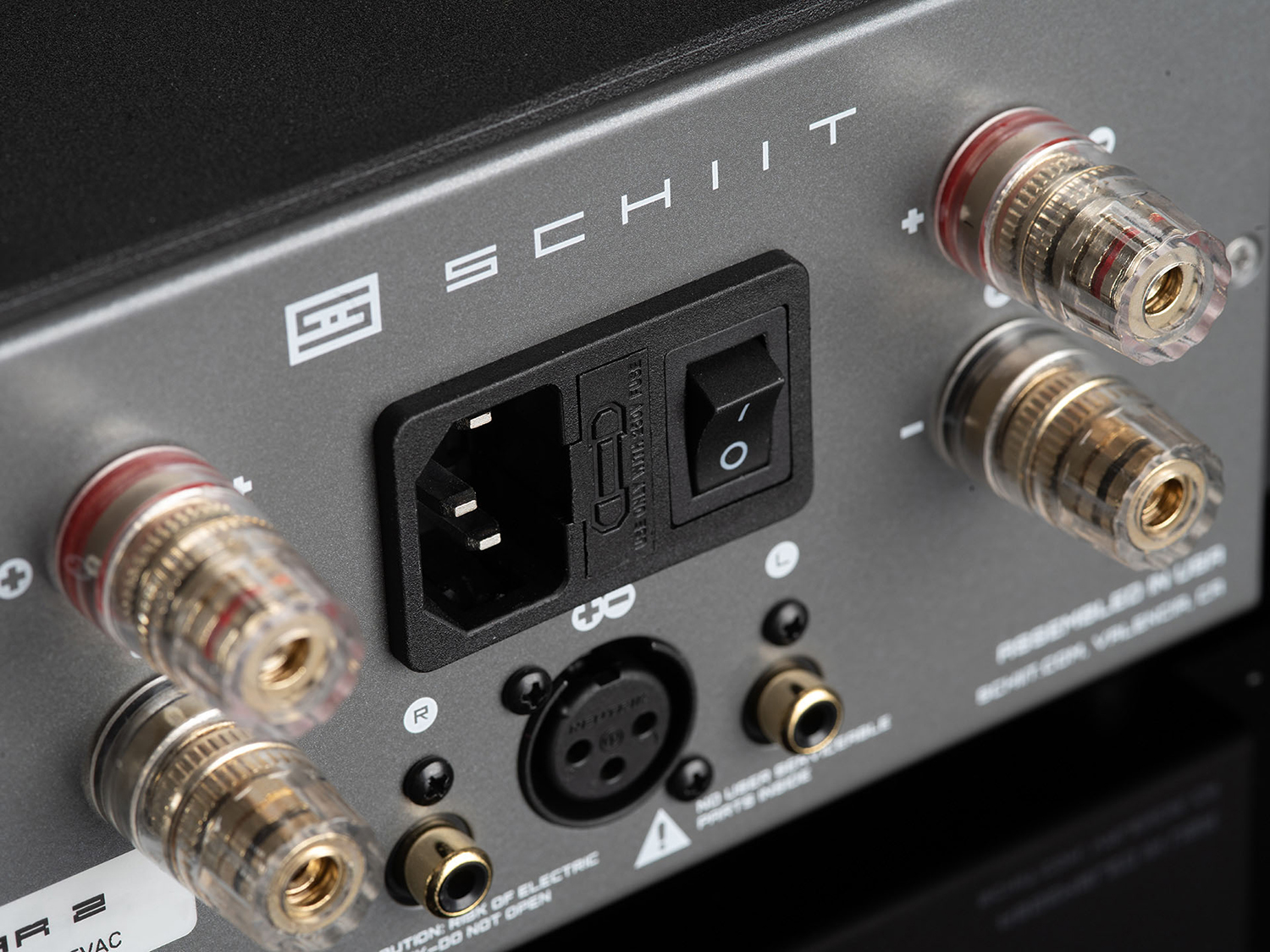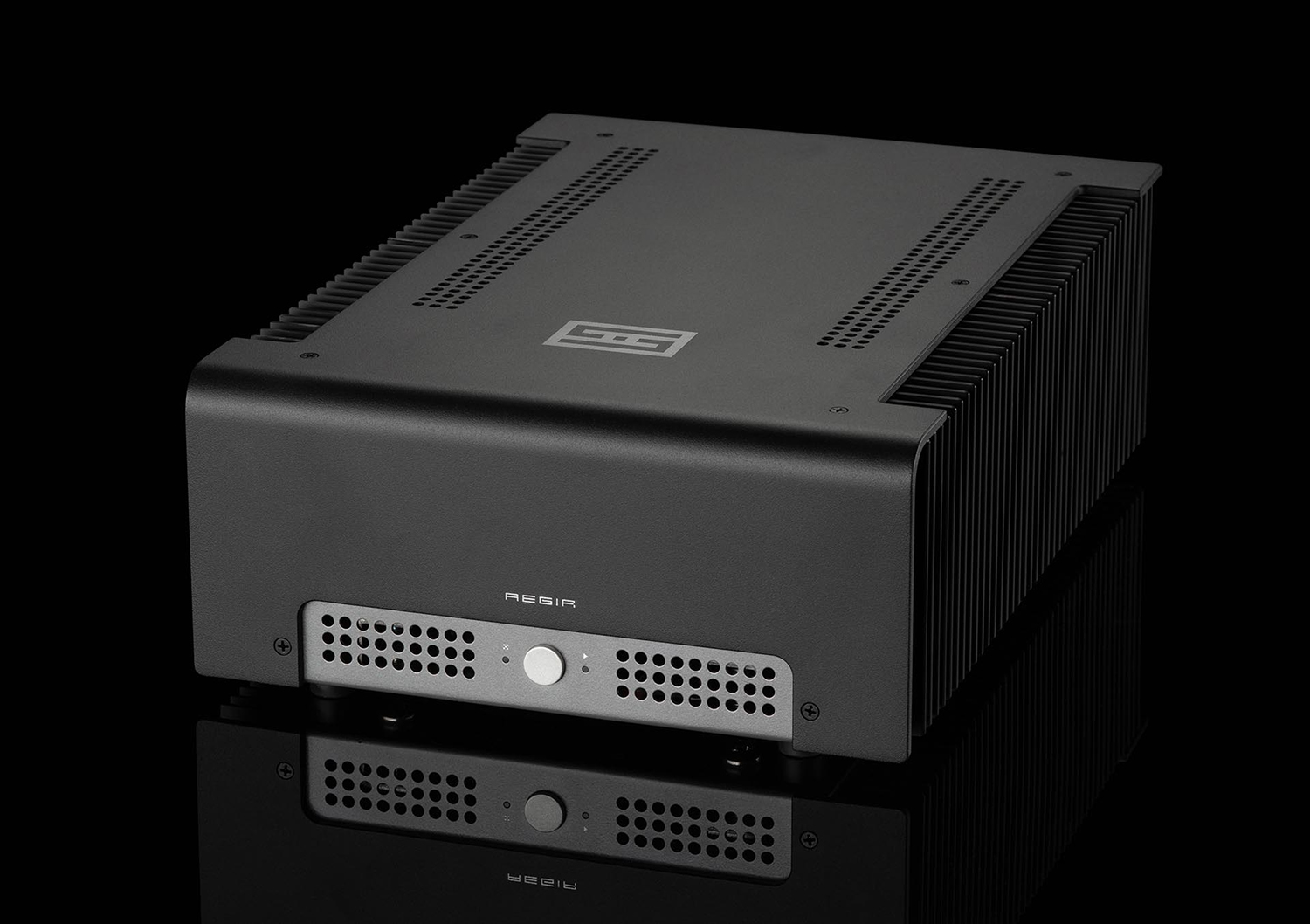
Schiit asks, “Why? Why do this at all?” A fair question of any revision with the fair assumption being—because it’s better.
But better how? Schiit provides the answers in the press release below but to summarize the new Aegir 2 is more powerful, has a lower noise floor, runs cooler, uses less power, and has less mechanical noise than the original thanks to a toroid transformer like the one found in the more upscale Schiit Ragnarok 2.

In typical Schiit style, Jason Stoddard, Schiit Audio’s co-founder and head of analog development, offers “Halo isn’t a high-impedance, current-output scheme that some people consider to be the ‘right’ way to drive speakers, nor is it a vanishingly-low-impedance output that is typical of most speaker amps and most people consider the ‘right’ way to drive loudspeakers.” Ha! Take that you black or white-ers!

The new Aegir 2 is available now directly from schiit.com at $899 for black and $949 for the brushed aluminum finish.
Here’s the complete press release:
2nd Time’s the Crazy
Introducing Aegir 2: the first Halo™ + Continuity™ speaker power amp
February 28, 2024, Valencia, CA. Today, Schiit Audio introduced the second generation of its Aegir speaker power amp, Aegir 2, bringing the Halo™ topology to a speaker amp for the first time, and providing significant enhancements to the original Aegir’s performance, including higher power output, less heat, and lower noise floor. Aegir 2 is available now at schiit.com for $899.

“It’s an entirely different amp,” said Jason Stoddard, Schiit Audio’s co-founder and head of analog development. “Literally nothing is the same, except the outer chassis.”
Stoddard cites the following improvements:
- Higher power. Aegir 2 delivers 30W into 8 ohms and 50W into 4 ohms, significantly more than its predecessor. This makes it more flexible for a wider range of speakers.
- Better integration. Aegir 2 debuts our Halo™ mixed-mode motion feedback system that has the potential to improve acoustic performance at the driver.
- Quieter. Aegir 2 has a -122dB noise floor from rated output, about 10-15dB better than Aegir. This means it’s gonna be dead-silent even on very efficient speakers
- Less heat. Aegir 2 actually runs cooler than the original, despite higher power. You can thank the new, refined Continuity™ output stage that borrows some tricks that we learned on Tyr.
- Better standby. Aegir 2’s standby mode consumes even less power than the previous, thanks to some tricks we learned from Vidar 2—only 1-2W.
- Less mechanical noise. Aegir 2 uses a toroid transformer, like the one we use in Ragnarok 2, which results in lower mechanical noise from the chassis.
Stoddard also readily acknowledges that the Halo™ topology, which claims the possibility of improved acoustic measurements, is controversial. Halo, which debuted on Midgard, is best described as a“mixed mode motion feedback system that includes the driver in the feedback network, offering the potential for correcting back EMF and reducing distortion at the driver, especially around the driver’s resonance point.”
Some designers have claimed to reduce distortion by a moderate amount in ported speaker systems. Some claim they can’t replicate these results. We ourselves got mixed results for headphones, perhaps because they are smaller and don’t have the problems of a big floppy woofer in a box, or perhaps because Halo doesn’t do much.
Halo isn’t a high-impedance, current-output scheme that some people consider to be the “right” way to drive speakers, nor is it a vanishingly-low-impedance output that is typical of most speaker amps and most people consider the “right” way to drive loudspeakers.
Schiit acknowledges this is an unusual way to do things, but cites its own problems with getting reproducable results, together with the issues of repeatability and provenance even if results were claimed.
“But even without Halo, Aegir 2 is a heckuva amp,” said Jason. “Take what it is without Halo, and it’s still an exceptional value.
Aegir 2 is available at schiit.com today at $899 for black, and $949 for brushed aluminum finish.
About Schiit Audio
Founded in 2010 by Jason Stoddard and Mike Moffat, Schiit has grown into a leader in affordable high-end audio, with a wide range of products spanning DACs, headphone amplifiers, and preamplifiers, from $49 to $2799
Specifications
Power Output:
Stereo, 8 Ohms: 30W RMS per channel
Stereo, 4 Ohms: 50W RMS per channel
Mono, 8 ohms: 100W RMS
Frequency Response: 20Hz-20Khz, -0.1db, 3Hz-550KHz, -3dB
THD: <0.005%, 20Hz-20KHz, at 20W RMS into 8 ohms
IMD: <0.005%, CCIR, at 20W RMS into 8 ohms
SNR: >122db, A-weighted, referenced to full output
Damping Factor: >10 into 8 ohms, 20-20kHz
Gain: 12 (22dB)
Input Sensitivity: AKA Rated Output (Vrms)/Rated Gain. Or, 14.3/12. You do the math.
Input Impedance: 22k ohms SE, 44k ohms balanced
Crosstalk: >95dB, 20-20kHz
Inputs: L/R RCA jacks for stereo input, single XLR for mono input
Topology: Fully complementary, all-BJT, current feedback, no coupling capacitors or DC servos with Halo™ mixed-mode motion feedback and Continuity™ constant transconductance output stage
Oversight: microprocessor-controlled monitoring and management of critical operational points, with standby mode and relay shut-down for overcurrent, thermal, DC, and other faults
Power Supply: 600VA transformer with dual mono main rails, plus boosted, discrete regulated supply to input, voltage gain and driver stages, plus separate, isolated and regulated rails for microprocessor management.
Power Consumption: 250W maximum
Size: 9” x 13” x 3.875”

